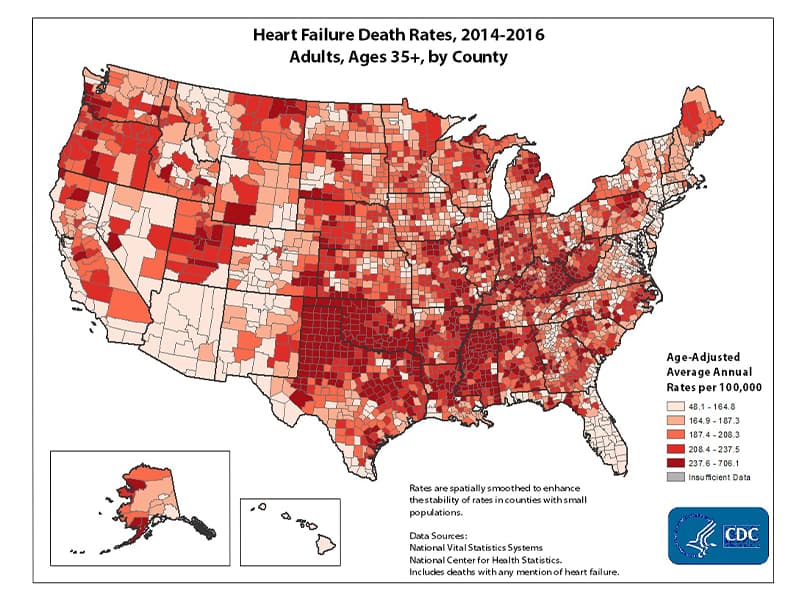Diabetes drug shows promise as heart failure treatment

For years, clinical trials have tried and failed to discover an effective treatment for a common kind of heart failure.
That is, until a global study co-led by a University of Mississippi Medical Center physician found convincing evidence for a new approach to treat heart failure with preserved ejection fraction, or HFpEF.
The paper, published in the New England Journal of Medicine August 27, showed that the diabetes drug empagliflozin reduced the risk of cardiovascular death or heart failure hospitalization by 21 percent.
For a condition that affects millions of Americans with no known therapy, that’s a substantial result, said Dr. Javed Butler, chair of the Department of Medicine at UMMC and co-author of the study.
“Until this trial, we had no effective therapies for patients with this form of heart failure. This is the only major cardiac disease where this was the case,” said Butler, Patrick H. Lehan Chair of Cardiovascular Medicine.
Heart failure happens when the heart cannot supply adequate blood to the body for its needs at normal heart pressures. It has many causes, including high blood pressure and coronary artery disease. It causes shortness of breath, tiredness, irregular heartbeats and swelling from fluid. If the heart does not function normally, it cannot provide adequate oxygen to the body.
There are two main types of heart failure. In heart failure with reduced ejection fraction, or HFrEF, the heart muscle does not contract as well as it should. In HFpEF, the heart contraction may be normal but for a combination of reasons, it cannot pump effectively.

Butler says the “complex pathophysiology” of HFpEF is a major reason why the condition has been treatment-resistant so far.
“In heart failure with reduced ejection fraction, the pathology is mostly about the heart itself and the available drugs target that issue,” Butler said. In preserved ejection fraction, multiple conditions can contribute to the dysfunction, including the heart, kidney disease, obesity, and metabolic disorders.
The U.S. Food and Drug Administration approved empagliflozin, sold under the brand name Jardiance, in 2014 to help type 2 diabetes patients manage their glucose levels. A sodium-glucose cotransporter 2 (SGLT2) inhibitor, it limits the kidneys’ ability to reabsorb sugar back into the bloodstream. Instead, the body passes extra sugar in the urine.
Butler recalls a “very vivid memory” from a few years ago that helped lead to the trial.
“I was talking with a few of my colleagues around the globe as we were starting to look at the pharmacodynamic profile of this new diabetes drug,” Butler said. That brought up the question: “If a drug has this kind of action on the body, can it have beneficial cardiovascular effects regardless of diabetes? Is it actually a cardiovascular drug that also lowers glucose?”
He and his colleagues arranged a series of clinical trials to learn whether empagliflozin could help solve one of the most pressing treatment challenges facing cardiologists. But not everyone in the medical community thought it was worth a shot.
“We received pushback when proposing to test if a diabetes drug could treat heart failure even in those without diabetes,” Butler said.
In the recent NEJM study, Butler and his colleagues recruited 5,988 HFpEF patients in 23 countries for a double-blind trial. The participants received either daily empagliflozin or a placebo in addition to their regular treatment. The research team followed each participant for a median time of 26 months to monitor for heart failure-related hospitalization or death.
The study found that empagliflozin reduced the risk of hospitalization or death from heart failure by 21 percent compared to placebo, driven by a 29 percent decline in hospitalization. The treatment group had a nine percent lower risk of death during the study period, although the result was not statistically significant on its own.
Most interestingly, Butler and his colleagues saw the same effect in both patients who did and did not have diabetes.
Dr. Mark Drazner of the University of Texas Southwestern Medical Center wrote in NEJM that trial had “a result that represents a major win against a medical condition that had previously proved formidable.”

The “trial should contribute to a change in clinical practice, given the paucity of therapeutic options available for patients with heart failure and a preserved ejection fraction,” Drazner wrote.
Butler and colleagues published other results from this trial August 29 in Circulation. They showed that the empagliflozin-treated patients had less severe heart failure symptoms at 12 weeks and two years after the start of treatment.
The team also found that empagliflozin has similar effects in HFrEF, which they published October 8, 2020 in NEJM. This finding set in motion the FDA’s decision to approve the drug for HFrEF on August 18.
The FDA has not yet approved empagliflozin to treat HFpEF. However, Butler said the manufacturer will submit data for review.
With these findings, Butler feels very comfortable about calling empagliflozin not simply a diabetes drug, but a “cardiovascular-risk modifying agent.”
“When a drug works on common underlying cardiovascular mechanisms, it has the potential to treat many different cardiovascular conditions,” Butler said.
He gave two examples. Angiotensin-converting enzyme, or ACE, inhibitors received initial FDA approval to treat hypertension, but doctors now use them to treat heart attacks, stroke and HFrEF. Statins lower blood cholesterol and in turn decrease the risk of heart disease and stroke.
Will empagliflozin join their ranks? Butler is a lead investigator on clinical trial examining whether the drug can lower the risk of cardiovascular events after a heart attack. He says another study is testing its ability to slow the progression of kidney disease.
However, he said there are cases where this drug will not be helpful. Empagliflozin should not be used for patients with type 1 diabetes, those on kidney dialysis or those with an allergy to the drug.
“As clinicians, we cannot take the average result from this trial and simply apply it to the patient sitting in front of us,” Butler said.
Butler describes the advancement of medicine as a “two-front war.” On one end, there is evidence generation, the basic science and clinical trials that lead to new knowledge. At the other is implementation: making that knowledge work for the benefit of patients.
“None of this science, none of the sacrifices of the 6,000 patients in this trial – none of that matters unless we actually implement the findings in clinical practice.”


